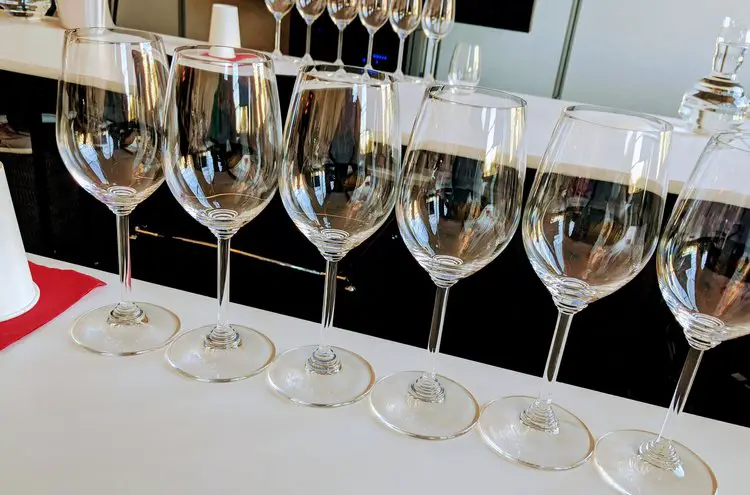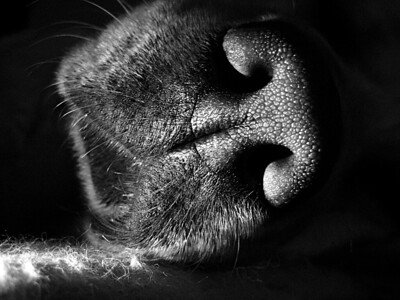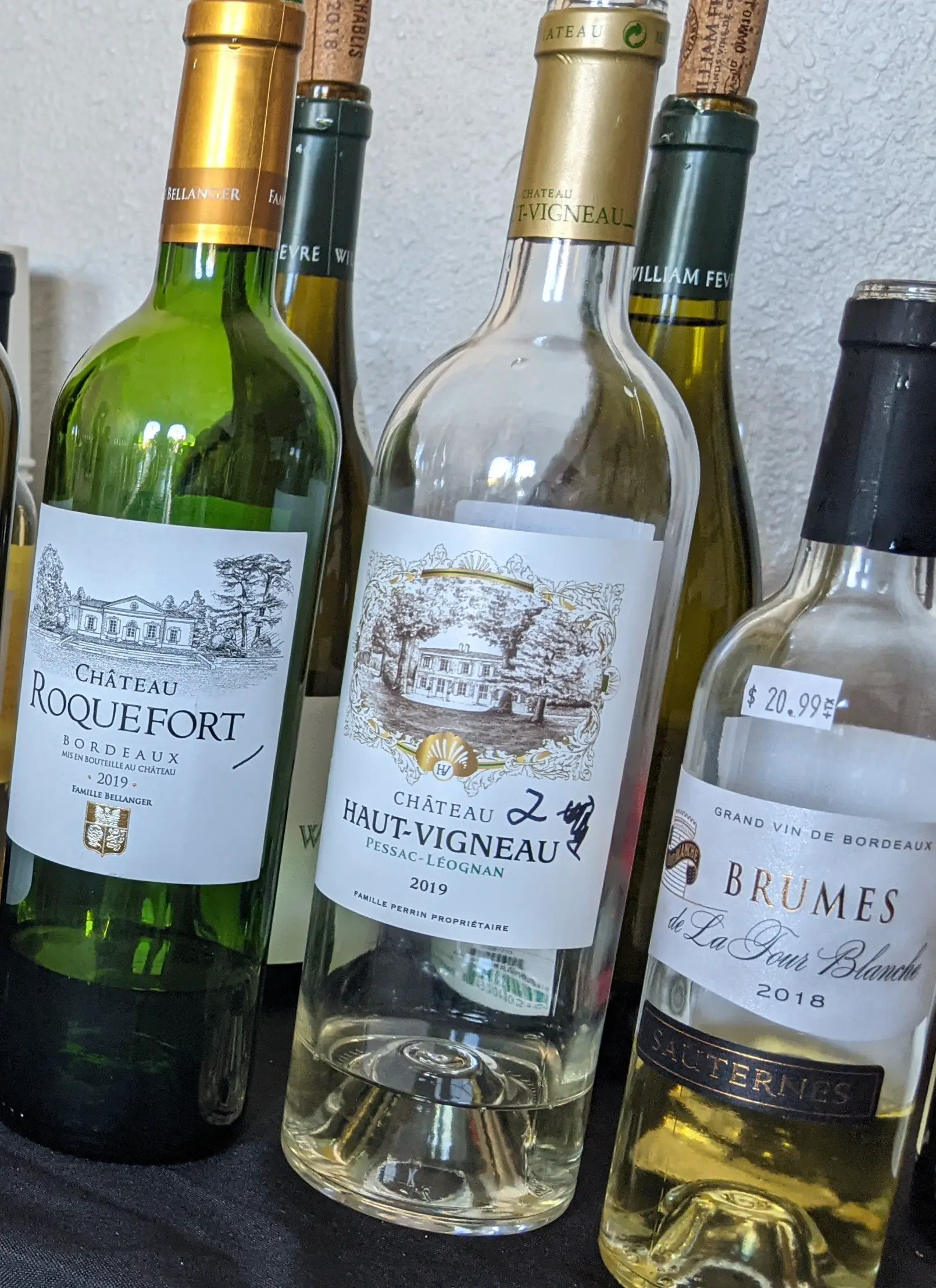
For the record, almost everyone can become a skilled wine taster. As in: Learn how to break down the wine, figure out what it is, and decide whether or not it’s any good.
You – yes YOU – can be an accomplished dégustateur de vins.
Enrolling in an advanced wine tasting class will help you learn how detect the nuances of wine. You learn to norm as a class on the structure and quality of a wine. You also learn about how the grapes are grown and how the winemaking process impact the final wine you’re drinking. Advanced wine tasting classes are a ton of work, but a great opportunity to learn about wine with other dedicated professionals and wine lovers.
Here’s what happens in an advanced wine tasting class.
- How Do You Get into an Advanced Wine Tasting Class?
- 7 Things that Happened that First Day in Advanced Wine Tasting Class
- 2. No One Agrees on Anything
- 3. You’re Tasting Very Slowly
- 4. Oh! The Complexities of Color!
- 5. Oh! The Noses!
- 6. You Feel Vindicated when at Least One Other Person Agrees with You, Even If You’re Both Wrong
- 7. You Begin to Develop Comradery
- How Does Any Of This Apply In The Real World?
- Thirsty for More?
How Do You Get into an Advanced Wine Tasting Class?
Advanced wine tasting classes are usually held through wine schools for students learning about wine and wine quality. These are sommeliers, winemakers, and wine buyers. People who work in the wine industry who need to hone their palates.
Advanced wine tasting classes involve lot of practice tasting a range of wines, a guru to help guide you, and a community of fellow learners to join you on your journey – like a Fellowship of the Ring, but for wine.
I thought it would fun to share with you 7 things that happen on your first day of wine tasting in an advanced tasting class. In my case, this was for my WSET Diploma studies.
Though not a critical element to the story at hand, but perhaps useful to paint a picture, the day in question covered all of Bordeaux and white Burgundy.
Ambitious.
7 Things that Happened that First Day in Advanced Wine Tasting Class
1. Awkwardness
The overall class atmosphere is awkward. You don’t know anyone yet, and you all come from different backgrounds – sales reps, distributors, enthusiasts, and retirees.
A cross section of wine people.
As you go through the first few wines, you have no idea if it’s only you who’s struggling, or if there are others in the same boat.
And no one readily volunteers that they’ve come up with something different on a wine.
Which leads us to #2…
2. No One Agrees on Anything
The messy reality is that everyone is all over the place when it comes to wine analysis and whether it’s any good or not.
The purpose of an advanced wine tasting class is to help you norm with a master taster. Thank goodness there are people who are way more qualified than you.
Day 1 is like those math tests teachers used to give you on the first day back from summer break to see how much you’ve forgotten – it ain’t pretty.
Some will call a wine high acid, others medium.
Some will call it as outstanding in quality, others meh…
Whatever you brought into the class as your working mental framework for wine analysis gets torn down pretty quickly.
3. You’re Tasting Very Slowly
It takes you (and everyone else) an agonizing amount of time to taste a wine and write a tasting note.
FOR.EV.ER.
Okay, maybe 10-15 minutes per wine. But the teacher gives you a measly 10 minutes for 3 wines.
No matter how you strategize, Murphy’s Law states that the teacher will always call on you for the one wine you never had a chance to taste. That’s just the way it happens.
So then you have to do an on-the-spot analysis. Time for a little public vulnerability:
Me: “This wine is medium acid, medium tannin, high alcohol…”
Teacher interrupts: “Medium tannin?”
Me, with a quiver of doubt: “Yes?”
Teacher: “Hmm… I’d say this is high tannin.”
Me, looking bewildered: “Yes! Of course! High tannin!” Right… how could I have ever missed that?
4. Oh! The Complexities of Color!
Is the wine you’re looking at medium lemon? Or pale gold? If wine 1 is pale gold, why does it look exactly like wine 2, which is medium lemon?
Then your thought process will start to strategize.
Maybe if you stand up next to the window to get some natural light and hold up the wines against your notepad it’ll make a difference?
Damn… there’s no way to hold the note pad and two glasses of wine up at the same time for a side-by-side comparison.
Who knew winetasting involved such logistics?
You’ll find the spontaneous discussion on the nuances of deciding to classify said wine medium lemon or pale gold intriguing.
You and your classmates will tilt your glasses in serious contemplation, weighing the various merits and possibilities while trying to dissect hue, hint, tone, and shade.
This process can take many lengthy, serious minutes of deliberation. Repeat said steps for red wine.
And if the teacher happens to pour a pink wine? Panic time.
No one’s prepared for pink wine. A frantic shuffling of papers ensues to pull out the official tasting grid for pink wines. Who studies pink wine?!? (Or is this one technically a salmon? AGH!)
5. Oh! The Noses!

It becomes apparent pretty quickly who in the class has super schnauzers. These fellow students are steeped in pencil shavings, sous bois (a.k.a., forest floor), garrigue, and flint – the rest of us have mastered red cherry, raspberry, and *maybe* some red licorice?
That’s actually a slight exaggeration.
Everyone in the room drinks wine; everyone has the basics down. But some are really good smellers.
And yes, other students tend to smell a range of different aromas, but you’ll learn that when someone states an aroma that you didn’t originally have, then it tends to smack you in the face (metaphorically).
Duh! Of course, there’s garrigue!
Garrigue: This is a shrubbiness – referring to specific shrubbery native to southern France, but used as a common red wine descriptor. I’ve not yet had the great good fortune to smell said shrubbery IRL (in real life), but I’m confident that I can pick it out in a red wine. Cue Monty Python: A SHRUBBERY!
6. You Feel Vindicated when at Least One Other Person Agrees with You, Even If You’re Both Wrong
Most of your assessments will be off. Embarrassingly incorrect. That’s why it feels so good when at least one other person in the class got the same tasting note that you came up with.
You’re not hanging out there in left field all by yourself – two’s company!
You make eye contact from across the room and point at yourself, mouthing ‘me too’ silently, a little shock absorber to that blow to their self-esteem, if nothing else.
You’re right there with them. Which leads us to #7.
7. You Begin to Develop Comradery
By the end of the day, your palate and brain are fried. Bordeaux to Burgundy is a stretch for even the heartiest of wine enthusiasts.
But as you pack up to leave, you chat with your classmates about that one wine that stumped you, or the wine that surprised you, or maybe that wine where you completely disagreed with the teacher, and (my favorite) the wine that you’ve never had before, didn’t know existed, but can’t wait to go buy.
You’re in this together with other wine lovers who are as nerdy and committed as yourself.
You’ve found your fellowship.
And the truth is, you can’t wait to put yourself through another gauntlet of a day tomorrow.

How Does Any Of This Apply In The Real World?
Excellent question. So glad you asked. As of this writing, my first day in advanced wine tasting class was almost 4 months ago to the day.
I recently had the opportunity to do an intensive 3 days of wine tasting at 5 different tasting rooms (All my friends asked me out on the same weekend. Who am I to question fate?)
In total, I probably went through about 45 wines.
After You Know How to Taste Wines
Of the 45 wines I tasted that day, 5 were remarkable and of outstanding quality (one sparkling, 2 reds, and 2 whites – spread out among the producers).
The rest were acceptable to very good. I’m confident that I can identify varietal characteristics and the winemaking techniques in the wine’s aroma and flavor profile.
This is actually fun to do – it’s like trying to piece together how an artist went about applying different brush strokes to achieve unique effects in a painting.
I can also taste when a wine’s out of balance and pick up common flaws (Syrah is prone to reduction, just in case you’re wondering, which results in a rubbery, eggy smell.).
You understand that wine price and wine quality aren’t always correlated
What Else Happens If You Know How to Taste Wines?
I noticed that the overall quality assessment didn’t necessarily correlate to price point. One of a winery’s better-quality wines wasn’t necessarily the most expensive.
Likewise, the more expensive wines weren’t necessarily the best wines structurally.
The disconnect between quality and price surprised me, but it makes sense the more that I think about.
Quality is one factor for price, yes, but price is likely linked to the winemaking style (use of oak or extended aging increases price), grape price (Cabernet Sauvignon grapes are more expensive than Merlot), a wine’s popularity on the market (sparkling wines are HOT), or even the wine’s origin story (legacy and heritage allude to higher quality).
Finally, I noticed that what I thought about a wine had nothing to do with whether my friends enjoyed it or not.
This, perhaps, is one of the most important take-aways for my three-day tasting tour.
Wines come in a range of styles, and so, it would seem, do personal preferences.
#drinkwhatyoulove
#tastingdiva
Thirsty for More?
Check out this post that got me started with my advanced wine studies.




